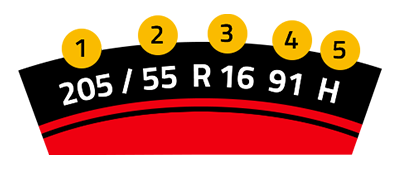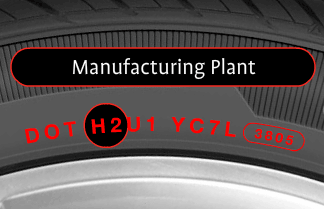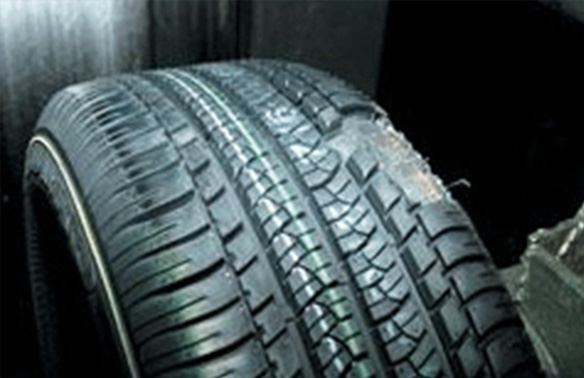
Kumho Tire is a global tire manufacturing company with established R&D centers that include Kumho Akron Technical Center (KATC) in Akron, U.S.A., Kumho Europe Technical Center (KETC) in Frank furt, Germany, and Kumho China Technical Center (KCTC) in China, along with the central R&D center located in Gwangju, Korea. State-of-art technologies with advanced research human re sources enables Kumho to develop world-class tires.
IRREGULAR WEAR
For a passenger car, it is generally recommended tire inflation pressure status of 28 ~32psi. In excess or deficiency of more than 10% at a proper tire inflation pressure, it does not result in so large problems but if it exceeds 10%, irregular wear phenomena occur. Wear rate is 1.5 times as the rate of tire inflation pressure and when deviation of the tire inflation pressure exceeds 30%, status more rapidly becomes worse
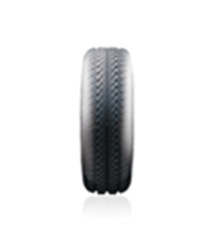
Where the tire inflation pressure is excessive, a tire grounding pressure is made too much on the central part and thus the only central part is worn. As the result, shock absorption reduces and passenger's comfort reached to the unpleasant level when passing through the convex or concave part.
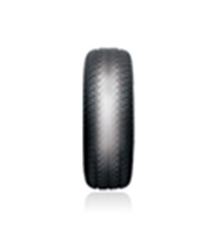
Where the tire inflation pressure is deficient, grounding pressure is made too much on the shoulder part and thus both edges are worn and movement of the road surface and the grounding part becomes large and as the result, wear of a tire increases. In addition, for high speed traveling, fatigue level within a tire increases due to repeated excessive extension and contraction movement, resulting in acceleration of rupture
STANDING WAVE PHENOMENA
Standing wave phenomena of a tire refers to wave phenomena of a tire appearing in high-speed traveling. A tire is ruptured in a short time if deformity status is repeatedly maintained before the deformed part when a tire revolves at a high speed is restored.
The less tire inflation pressure, the severer such phenomena appear, and the life of a tire is in inverse proportion to the deficiency rate of tire inflation pressure.
Standing wave phenomena reduce strength of adhesives adhering tire cords or commercial cords and thus secession of a tire appears and so results a large traffic accident. To prevent Standing wave phenomena, it is better more increase tire inflation pressure by 10~15% or so than usual time in high-speed traveling.

Tire inflation pressure status of
30psi
Life of tire: 1hr 47min

Tire inflation pressure status of
20psi
Life of tire: 1hr 11 min

Tire inflation pressure status of
10psi
Life of tire: 43min
EFFECT INFLATION PRESSURE ON TIRE
Since adherence between tread and road surface is reduced if tire inflation pressure is not proper, friction power, braking power and handling as well as grounding power is naturally aggravated. There is concern of damage due to standing wave phenomena or wear if elasticity of a tire is lack and passenger's comfort is also naturally reduced.




 korea
korea
 china
china
 japan
japan
 vietnam
vietnam
 australia
australia
 thailand
thailand
 germany
germany
 uk
uk
 spain
spain
 austria
austria
 russia
russia
 poland
poland
 france
france
 italy
italy
 NE/BAL(EN)
NE/BAL(EN)
 TÜRKIYE
TÜRKIYE
 usa
usa
 canada(EN)
canada(EN)
 brazil
brazil
 egypt
egypt
